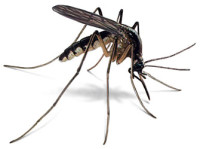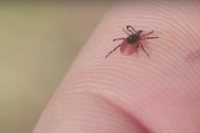Staying safe this summer
Safety and risk management are standard features of all outdoor programs. Day hikes, weekend expeditions or summer camp are mini “outdoor programs” where a small bit of knowledge can go a long way to reducing your envelope of risk and thereby keeping you and your loved ones safe.
In a most simple way, safety rests upon knowledge and experience on one hand and a continuously changing set of environmental factors on the other. The area of overlap is the envelope of risk. Behavior is potentially under your control, the environment is not. You use your knowledge and experience to choose an appropriate and safe course of action.
Let’s say you are mostly a city person. You don’t know a lot about nature or geography and no one has taught you any woods lore. You also don’t know any specifics about environmental hazards such as lightning, altitude or animal behavior. Your envelope of risk is going to be pretty big. For example: If you don’t secure your food, day or night, you could face big trouble from: ants, birds, mice, squirrels, raccoons, skunks, deer or bear, or other people.
The goal of safety and risk management is to decrease the envelope of risk as much as possible. To do this you learn about the specific environmental factors where you’ll be and also keep your behavior in check when you sense the edge is getting pushed. Don’t bag that peak or cross that pass when afternoon thunderstorms are building. Don’t get hung up on an artificial goal when lives are at stake.
What to keep in mind for environmental factors? Temperature, access to water, storms, altitude, insects, poisonous animals, animal behavior, poison oak, substrate, slope and steep terrain, how much daylight, sneaker waves etc., things like this. Human factors are psychological factors and motivations, level of experience, choice of gear, expectations etc.
Risky situations happen for a whole host of reasons, consciously or not. Being safe and avoiding unnecessary risk is a style to be cultivated. Some end up getting Darwin Awards, others live another day. As the saying goes, there are old pilots and there are bold pilots, but there are no old, bold pilots. To manage risk, stay in a safe envelope and gradually push the edge as you get more experience.
No matter how much experience you do get, and how much knowledge you gain of the environment, the best safety attribute is to have a beginner’s mind. Look at situations afresh every time. Complacency, and auto-pilot assumptions are tendencies to avoid if you want to be safe in the woods.
The situation close to home
The combination of ample rains and temperatures warmer than normal have contributed to the likelihood of plenty of itchy mosquito bites and other aggressive insects. While our area has been generally spared from infections due to mosquito borne disease, the changing climate is already allowing for spread of illnesses otherwise restricted to sub-tropical climates.
 Though the Zika Virus has yet to spread into North America, the government is predicting that it will and is rushing research into vaccines that could help prevent an epidemic. Meanwhile, West Nile Virus will certainly appear among the population again this year.
Though the Zika Virus has yet to spread into North America, the government is predicting that it will and is rushing research into vaccines that could help prevent an epidemic. Meanwhile, West Nile Virus will certainly appear among the population again this year.
The Marin-Sonoma mosquito abatement program is in full swing; residents are advised to check property for standing water. Even small amounts can provide a suitable habitat for mosquitos, which during warm weather exhibit a faster rate of growth and maturation. Mosquito fish are available for those with fountains or pools of water, and non-toxic bacterial “baits” are also effective if used properly.
Mosquitos are not the only insects which spread disease; ticks are also plentiful during the warmer months, and Lyme Disease is always a risk. Lyme is a particularly difficult disease to diagnose. Some people never develop the characteristic “Bull’s Eye” rash, and symptoms vary widely. Months can be spent by doctors trying to figure out what’s causing health problems which can mimic arthritis, low blood sugar, and even oncoming Parkinson’s disease. Meanwhile, the bacteria which causes Lyme invades the body’s organs and can cause permanent damage. Treatment with antibiotics can, in severe cases, be life-long.
It’s important for kids and parents to learn to identify ticks and tick bites; daily inspections should become routine for those who spend time outdoors  hiking, in the woods, or in short sleeves and bathing suits. Tick nymphs, the immature stage of ticks, are as capable of carrying Lyme as adult ticks, but identifying them is made difficult by their tiny size; nymphs are the size of the period at the end of this sentence.
hiking, in the woods, or in short sleeves and bathing suits. Tick nymphs, the immature stage of ticks, are as capable of carrying Lyme as adult ticks, but identifying them is made difficult by their tiny size; nymphs are the size of the period at the end of this sentence.
Rattlesnakes are also out earlier than usual this year. Small rattlesnakes are just as poisonous as large snakes, and often more aggressive. Cautioning children about snakes risks making them afraid of snakes in general, so care should be taken to help them properly identify rattlers.
Dead or dying small animals, such as rats, birds and bats should not be handled with bare hands. The natural curiosity of children will incline them to investigate what they find, but this needs to be combined with caution.
An outdoor experience, either at camp or not, is part of the joys of summer, but disease vectors have increased and the illnesses they carry can be very serious. Adults and children alike should become informed and educated about the ways to protect themselves from harm.



